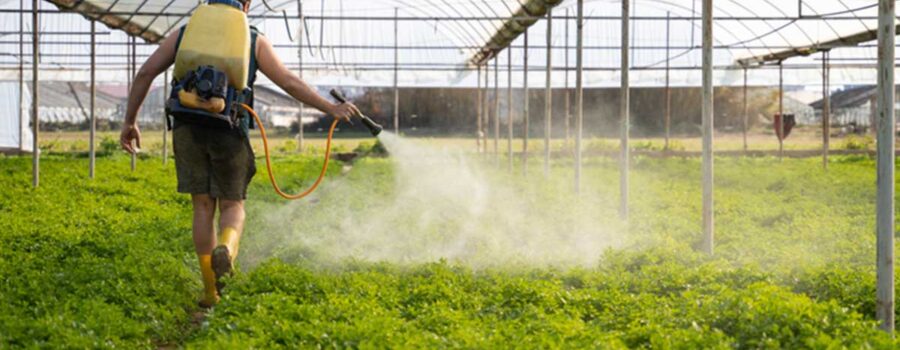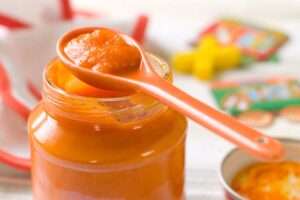Let’s Talk Dirty…Dozen!
Hello there, super parents! As your friendly neighborhood dad-blogger, I’m back again. Today, we’re taking a deep dive into the world of fruits, veggies, and something not so savory lurking on them – pesticides. Yep, we’re talking about the infamous “Dirty Dozen” and “Clean Fifteen” lists for 2023, brought to us by the Environmental Working Group (EWG). Let’s roll up our sleeves and get to the core of this – pesticide-free produce shopping.
What’s all the Fuss about the Dirty Dozen?
The Dirty Dozen is a list that the EWG puts out every year. In fact, it ranks the top 12 fruits and veggies that are highest in pesticide residue. Scary, right? But before you panic, remember that these tests are done after the produce has been washed and peeled, just like you’d do at home.
So, Why Should We Care?
Well, I think we can all agree that we don’t want our kids exposed to anything harmful. In fact, studies suggest that certain pesticides could be linked to health issues, including developmental problems in kids, hormone disruption, and even some types of cancer. With the Dirty Dozen list, we’re better equipped to make informed decisions about our grocery shopping and can opt for organic when buying these particular fruits and veggies. Now, we’re not saying it’s the magic bullet, but every little helps, right?
Unmasking the 2023 Dirty Dozen
So, without further ado, let’s reveal the culprits. Leading the pack in 2023 are Strawberries, followed by Spinach, Kale, Collard & Mustard Greens, Peaches, Pears, Nectarines, Apples, Grapes, Bell & Hot Peppers, Cherries, Blueberries, and Green Beans. Who would’ve thought those innocent-looking strawberries could be hiding so much behind their seedy exterior?
How Do We Navigate This Minefield?
When you’re buying fruits and veggies from the Dirty Dozen list, it’s worth considering going organic. Now, before you think I’ve joined some high-flying health cult, remember that organic means less exposure to pesticides. Sure, washing your produce helps, but it doesn’t remove all residues. And peeling can help too, but who wants to strip their fruits and veggies of all those lovely nutrients?
Don’t Forget the Clean Fifteen
Now, if you’re starting to feel like all hope is lost, don’t worry. There are still plenty of things you can do to protect your family from pesticides. There’s also the Clean Fifteen – a list of fruits and veggies with the lowest pesticide residues. Furthermore, this year’s winners include Avocados, Sweet Corn, Pineapple, Onions, Papaya, Sweet Peas (frozen), Asparagus, Honeydew Melon, Kiwi, Cabbage, Mushrooms, Mangoes, Sweet Potatoes, Watermelon, and Carrots. So, when shopping for these, you can breathe a little easier about going for the non-organic option. Just remember, a small amount of sweet corn, papaya, and summer squash sold in the US comes from genetically modified seeds, so go organic with these if you’re not a fan of GMOs.
Wrapping Up
So there you have it, folks – the Dirty Dozen and Clean Fifteen lists for 2023. Remember, this isn’t about fear but about making informed choices for our families. So, next time you’re wandering the grocery store aisles, you’ll know a little more about what’s on those produce shelves.
References:
- EWG. (2023). EWG’s 2023 Shopper’s Guide to Pesticides in Produce. EWG’s Dirty Dozen for 2023. [Online] Available at: https://www.ewg.org/foodnews/ (Accessed 10 July 2023).
- U.S. Department of Agriculture. (2023). Pesticide Data Program. [Online] Available at: https://www.usda.gov/ (Accessed 10 July 2023).
- Bouchard, M. F., et al. (2011). Prenatal Exposure to Organophosphate Pesticides and IQ in 7-Year-Old Children. Environmental Health Perspectives, 119(8), 1189–1195.
- Mostafalou, S., & Abdollahi, M. (2017). Pesticides: an update of human exposure and toxicity. Archives of toxicology, 91(2), 549-599.
- Bradman, A., et al. (2015). Effect of Organic Diet Intervention on Pesticide Exposures in Young Children Living in Low-Income Urban and Agricultural Communities. Environmental Health Perspectives, 123(10), 1086–1093.
- Curl, C. L., et al. (2015). Estimating pesticide exposure from dietary intake and organic food choices: the Multi-Ethnic Study of Atherosclerosis (MESA). Environmental Health Perspectives, 123(5), 475–483.
- Munoz-Quezada, M. T., Lucero, B. A., Barr, D. B., Steenland, K., Levy, K., Ryan, P. B., Iglesias, V., Alvarado, S., Concha, C., Rojas, E., & Vega, C. (2013). Neurodevelopmental effects in children associated with exposure to organophosphate pesticides: A systematic review. NeuroToxicology, 39, 158–168.
- Mnif, W., Hassine, A. I. H., Bouaziz, A., Bartegi, A., Thomas, O., & Roig, B. (2011). Effect of Endocrine Disruptor Pesticides: A Review. International Journal of Environmental Research and Public Health, 8(6), 2265–2303.
- Zhang, L., Rana, I., Shaffer, R. M., Taioli, E., & Sheppard, L. (2019). Exposure to glyphosate-based herbicides and risk for non-Hodgkin lymphoma: A meta-analysis and supporting evidence. Mutation Research/Reviews in Mutation Research, 781, 186–206.
- EWG. (2023). EWG’s 2023 Shopper’s Guide to Pesticides in Produce. EWG’s Dirty Dozen for 2023. [Online] Available at: https://www.ewg.org/foodnews/ (Accessed 10 July 2023).
- Zhan, L., et al. (2018). The effects of strawberries on pesticide exposure in young children: A randomized controlled trial. Journal of Exposure Science & Environmental Epidemiology, 28, 31-37.
- Cimino, A. M., et al. (2017). Effects of Neonicotinoid Pesticide Exposure on Human Health: A Systematic Review. Environmental Health Perspectives, 125(2), 155–162.
- Krol, W. J., et al. (2000). Reduction of pesticide residues on produce by rinsing. Journal of Agricultural and Food Chemistry, 48(10), 4666-4670.
- Lu, C., et al. (2008). Organic diets significantly lower children’s dietary exposure to organophosphorus pesticides. Environmental Health Perspectives, 116(2), 260–265.
- “EWG’s 2023 Shopper’s Guide to Pesticides in Produce: Clean Fifteen.” Environmental Working Group, 2023, https://www.ewg.org/foodnews/clean-fifteen.php. Accessed 10 July 2023.








